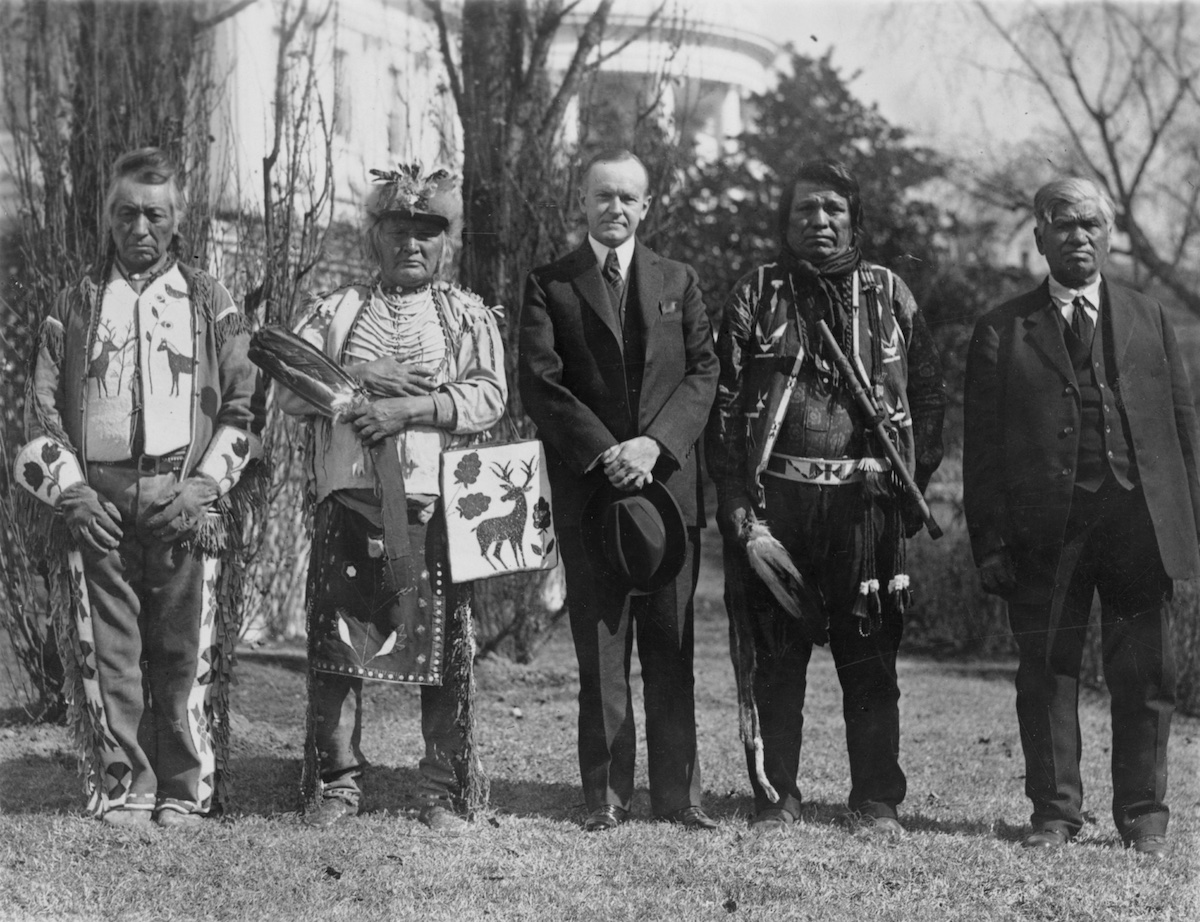The Indian Citizenship Act
The decision to make Native Americans citizens of the United States was not straightforwardly progressive.

On 2 June 1924 President Calvin Coolidge signed into law the Indian Citizenship Act, also known as the Snyder Act, granting citizenship to all Indigenous peoples in the United States. The Act stated:
That all non-citizen Indians born within the territorial limits of the United States be ... citizens of the United States: Provided, That the granting of such citizenship shall not in any manner impair or otherwise affect the right of any Indian to tribal or other property.
This law made citizens of approximately 125,000 of the 300,000 Indigenous people in the country, with the remainder having secured US citizenship before this through other means, such as the Dawes Act or service in the First World War.
